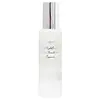What's inside
What's inside
 Key Ingredients
Key Ingredients

 Benefits
Benefits

 Concerns
Concerns

 Ingredients Side-by-side
Ingredients Side-by-side

Water
Skin ConditioningPropylene Glycol
HumectantNiacinamide
SmoothingPentylene Glycol
Skin ConditioningButylene Glycol
HumectantGlycerin
HumectantCentella Asiatica Extract
CleansingDipotassium Glycyrrhizate
HumectantGalactomyces Ferment Filtrate
HumectantPropanediol
SolventCeramide NP
Skin ConditioningPEG-7 Glyceryl Cocoate
EmulsifyingHyaluronic Acid
HumectantEthylhexylglycerin
Skin ConditioningAloe Barbadensis Leaf Extract
EmollientPhenoxyethanol
PreservativeTranexamic Acid
AstringentAllantoin
Skin ConditioningCollagen
MoisturisingMalus Domestica Fruit Cell Culture Extract
Skin ConditioningLecithin
EmollientXanthan Gum
EmulsifyingDisodium EDTA
Hydroxyethylcellulose
Emulsion Stabilising1,2-Hexanediol
Skin ConditioningCaprylyl Glycol
EmollientWater, Propylene Glycol, Niacinamide, Pentylene Glycol, Butylene Glycol, Glycerin, Centella Asiatica Extract, Dipotassium Glycyrrhizate, Galactomyces Ferment Filtrate, Propanediol, Ceramide NP, PEG-7 Glyceryl Cocoate, Hyaluronic Acid, Ethylhexylglycerin, Aloe Barbadensis Leaf Extract, Phenoxyethanol, Tranexamic Acid, Allantoin, Collagen, Malus Domestica Fruit Cell Culture Extract, Lecithin, Xanthan Gum, Disodium EDTA, Hydroxyethylcellulose, 1,2-Hexanediol, Caprylyl Glycol
Water
Skin ConditioningAscorbic Acid
AntioxidantPropanediol
SolventLaureth-23
CleansingGlycerin
HumectantPentylene Glycol
Skin ConditioningPropylene Glycol
HumectantEthoxydiglycol
HumectantBis-PEG-12 Dimethicone
EmollientDipropylene Glycol
HumectantTocopherol
AntioxidantPanthenol
Skin ConditioningArginine
MaskingFerulic Acid
AntimicrobialEctoin
Skin ConditioningPhenoxyethanol
PreservativeEthylhexylglycerin
Skin ConditioningHydroxyectoin
BufferingHydroxymethoxyphenyl Decanone
Skin ConditioningSodium Hyaluronate
HumectantWater, Ascorbic Acid, Propanediol, Laureth-23, Glycerin, Pentylene Glycol, Propylene Glycol, Ethoxydiglycol, Bis-PEG-12 Dimethicone, Dipropylene Glycol, Tocopherol, Panthenol, Arginine, Ferulic Acid, Ectoin, Phenoxyethanol, Ethylhexylglycerin, Hydroxyectoin, Hydroxymethoxyphenyl Decanone, Sodium Hyaluronate
Ingredients Explained
These ingredients are found in both products.
Ingredients higher up in an ingredient list are typically present in a larger amount.
Ethylhexylglycerin (we can't pronounce this either) is commonly used as a preservative and skin softener. It is derived from glyceryl.
You might see Ethylhexylglycerin often paired with other preservatives such as phenoxyethanol. Ethylhexylglycerin has been found to increase the effectiveness of these other preservatives.
Glycerin is already naturally found in your skin. It helps moisturize and protect your skin.
A study from 2016 found glycerin to be more effective as a humectant than AHAs and hyaluronic acid.
As a humectant, it helps the skin stay hydrated by pulling moisture to your skin. The low molecular weight of glycerin allows it to pull moisture into the deeper layers of your skin.
Hydrated skin improves your skin barrier; Your skin barrier helps protect against irritants and bacteria.
Glycerin has also been found to have antimicrobial and antiviral properties. Due to these properties, glycerin is often used in wound and burn treatments.
In cosmetics, glycerin is usually derived from plants such as soybean or palm. However, it can also be sourced from animals, such as tallow or animal fat.
This ingredient is organic, colorless, odorless, and non-toxic.
Glycerin is the name for this ingredient in American English. British English uses Glycerol/Glycerine.
Learn more about GlycerinPentylene glycol is typically used within a product to thicken it. It also adds a smooth, soft, and moisturizing feel to the product. It is naturally found in plants such as sugar beets.
The hydrophilic trait of Pentylene Glycol makes it a humectant. As a humectant, Pentylene Glycol helps draw moisture from the air to your skin. This can help keep your skin hydrated.
This property also makes Pentylene Glycol a great texture enhancer. It can also help thicken or stabilize a product.
Pentylene Glycol also acts as a mild preservative and helps to keep a product microbe-free.
Some people may experience mild eye and skin irritation from Pentylene Glycol. We always recommend speaking with a professional about using this ingredient in your routine.
Pentylene Glycol has a low molecular weight and is part of the 1,2-glycol family.
Learn more about Pentylene GlycolPhenoxyethanol is a preservative that has germicide, antimicrobial, and aromatic properties. Studies show that phenoxyethanol can prevent microbial growth. By itself, it has a scent that is similar to that of a rose.
It's often used in formulations along with Caprylyl Glycol to preserve the shelf life of products.
Propanediol is an all-star ingredient. It softens, hydrates, and smooths the skin.
It’s often used to:
Propanediol is not likely to cause sensitivity and considered safe to use. It is derived from corn or petroleum with a clear color and no scent.
Learn more about PropanediolPropylene Glycol is an odorless, colorless liquid. As a humectant, it helps skin retain moisture. It also aids in delivering active ingredients.
Another role of this ingredient is preventing a product from melting or freezing. Propylene glycol also adds antimicrobrial properties to a product, elongating product lifespan.
This ingredient is considered an organic alcohol and commonly added into both cosmetics and foods.
Those with sensitive skin or conditions may develop a rash when using this ingredient.
Learn more about Propylene GlycolWater. It's the most common cosmetic ingredient of all. You'll usually see it at the top of ingredient lists, meaning that it makes up the largest part of the product.
So why is it so popular? Water most often acts as a solvent - this means that it helps dissolve other ingredients into the formulation.
You'll also recognize water as that liquid we all need to stay alive. If you see this, drink a glass of water. Stay hydrated!
Learn more about Water